Jon Weinberg is a student at Harvard Law School.
36,000 Verizon workers across the Northeastern United States are currently on strike in the largest American work stoppage since 2011. The workers, represented by the Communication Workers of America and International Brotherhood of Electrical Workers, are primarily motivated by concerns about job protection from outsourcing and the creation of well-paying jobs via expansion of services. While many Americans have learned about the strike from picket lines, far more have seen the “virtual” picket line through Facebook, Instagram, Snapchat and other social media platforms.
As much as the strike represents an important dispute over the future of blue-collar work, it’s just as important by virtue of it being the most noteworthy work stoppage in the age of social media. Unions and other labor-movement actors have effectively used social media before, most visibly in the Fight for $15, but they haven’t before had an opportunity to share a traditional work stoppage of this scope. While not nearly as sizable as the ten largest strikes in American history, this strike is the first of its kind to last more than a few days and be liked, shared, and tweeted en masse in the United States (but not China). A review of the CWA and IBEW’s social media efforts shows their virtual picket line is exposing Facebook and Twitter users to the strike, and thus represents an important visualization of collective bargaining for millennials.
The Verizon strike is a rare opportunity for labor unions to draw attention to the labor movement through a work stoppage. The Nation notes how “an actual strike is a rare event in modern US labor relations—as their ranks have thinned and their opponents become more hostile, unions have been increasingly reluctant to call on members to withhold their labor.” A columnist for The Buffalo News analyzed data from the Bureau of Labor Statistics and found that “the work stoppage at Verizon is almost as big as all of the major strikes that took place across the country during 2015 combined, and is far bigger than all of the strikes that took place during 2014” while also highlighting that “just five of last year’s 12 strikes lasted for a month or more. Half ended in a week or less and three of those were just one-day stoppages.”
The Virtual Picket Line
The CWA and IBEW have recognized the importance of technology and social media to the strike. Their strike portal, www.standuptoverizon.com, allows both striking members and supporters to find picket lines, receive email and text updates, print and share materials, and sign a petition showing solidarity with striking workers. Three of the resources for members are images calibrated to be shared via Facebook. Of course, the unions encourage spreading of all portal pages through embedded buttons allowing one-click sharing via Facebook and Twitter.
The unions have also created an official Facebook page for the strike though which they engage both striking members and the public. As of this writing, the page is “liked” by 31,389 Facebook users who then receive updates via Facebook. Posts on the page reflect effective practices in the use of social media. For one, the organizers have designed images that can be easily shared by users to show solidarity with or participation in the strike, with calls for active engagement:
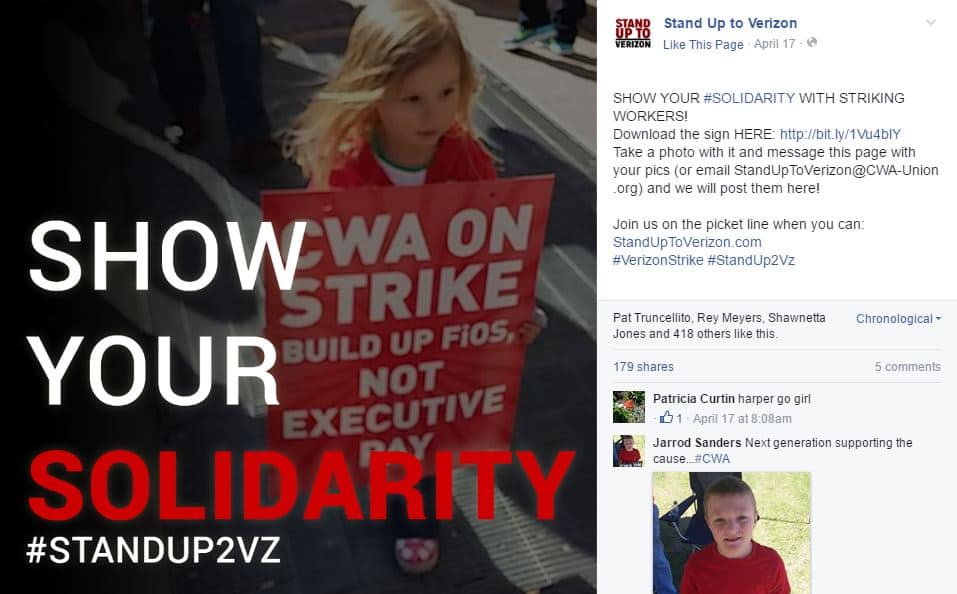
They have also taken advantage of events, such as Tax Day, to highlight Verizon’s wealth via imagery and statistics designed to resonate with users:
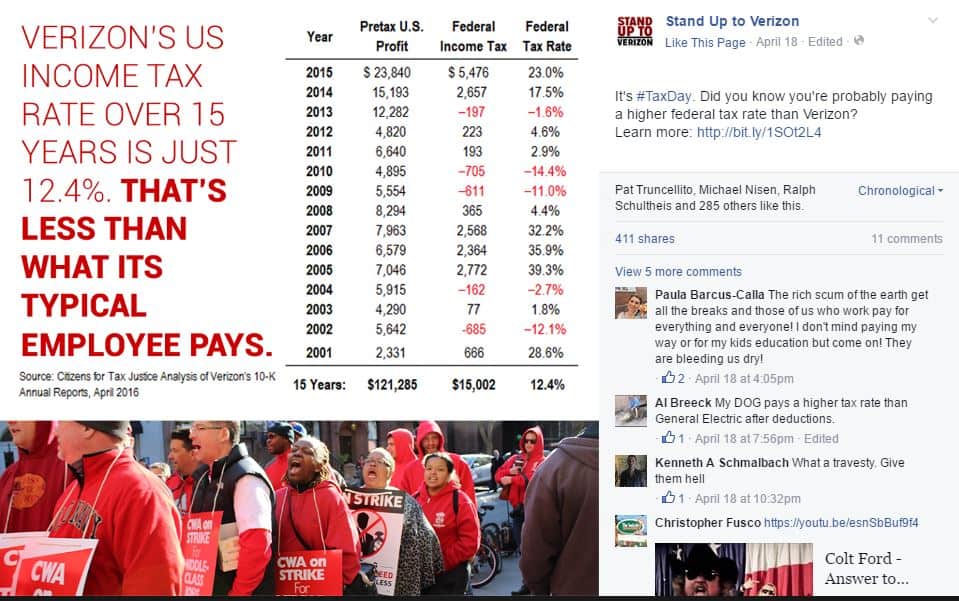
Perhaps most effectively, the organizers have shared images from the picket line that both humanize the strike and demonstrate its scope – “tagging” participating workers to give identities to the striking workers for the public:
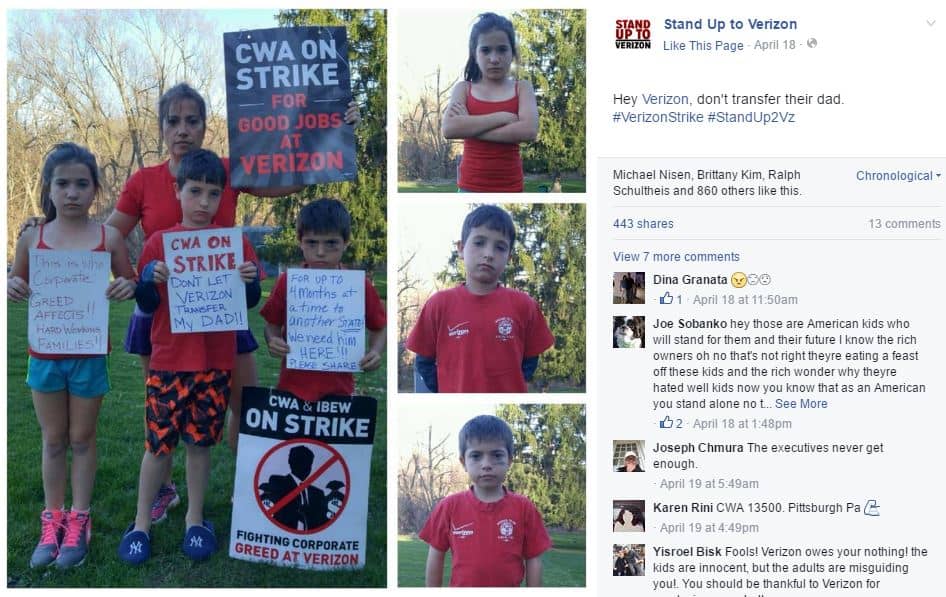
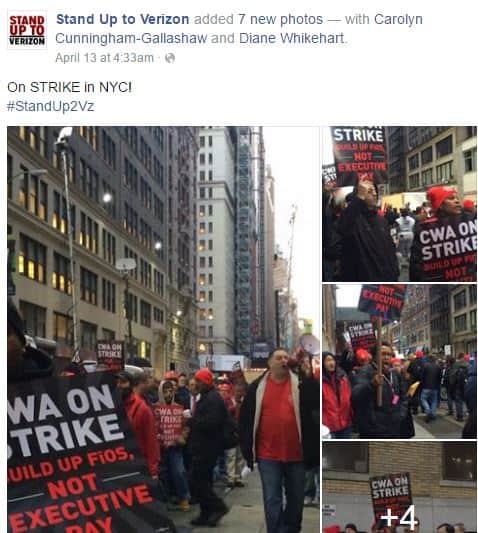
Finally, the organizers have shared memes designed to capture the frustration of striking workers:
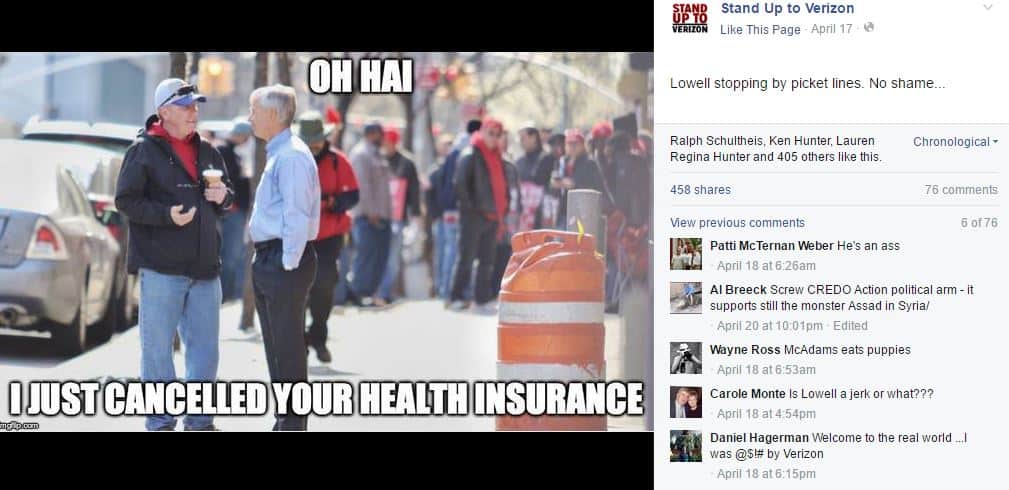
Twitter has also been used extensively to document the strike, through the #StandUp2VZ hashtag, by both unions and those expressing solidarity.
Social Media & The Labor Movement
The degree to which these and other posts have been shared demonstrates that the strike is palpable even to those who have not encountered a Verizon picket line personally. But a series of questions remains. Even if the messages are palpable, are they also impactful? Whether this exposure will have any tangible effect on the strike outcome itself, or lead to any changed fortunes for the labor movement, remains to be seen. Given that there are 36,000 striking workers, the 31,389 page likes may seem comparatively insignificant. Next, will social media serve to amplify traditional organizing or represent a new mechanism through which unions will empower collective action going forward? There is also the question of the ends of the labor movement’s social media use. Is it geared to Verizon workers themselves or aimed at encouraging broader social change? Since many young Americans are not unionized yet hold favorable views of the labor movement, this exposure could be particularly important, if it in fact reaches them.

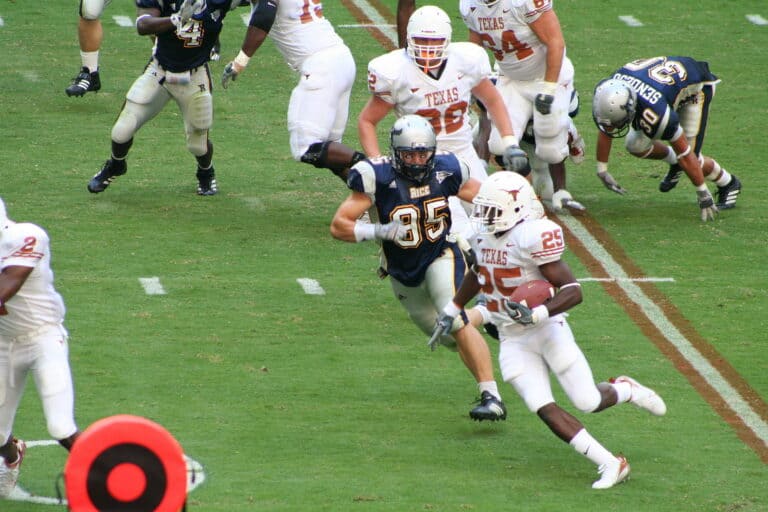
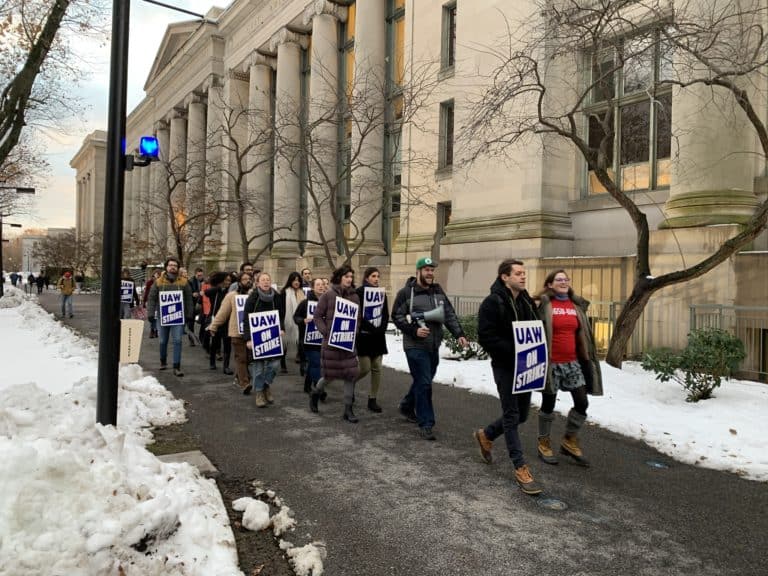
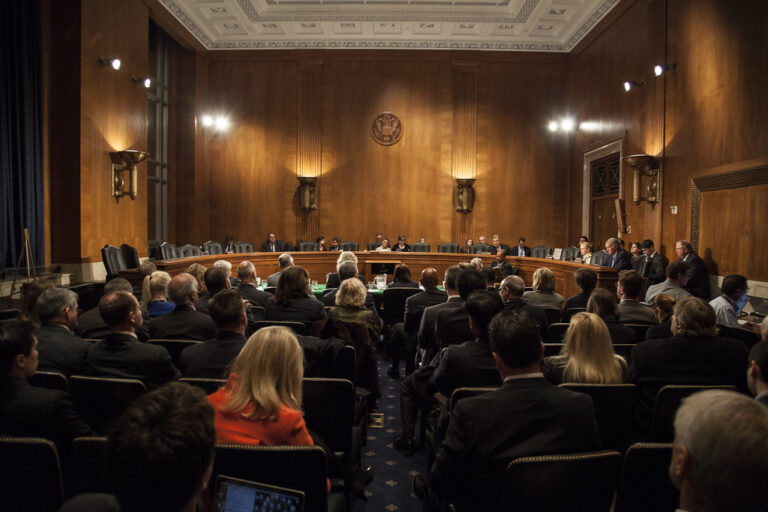
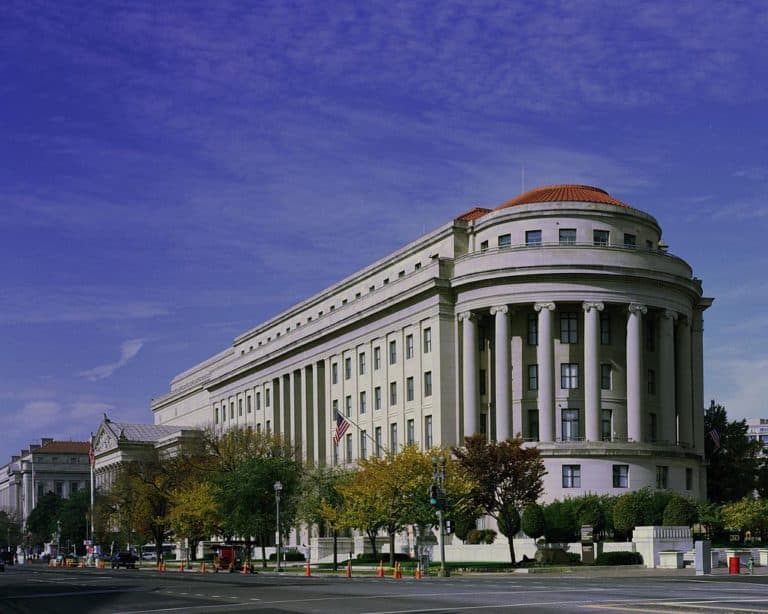
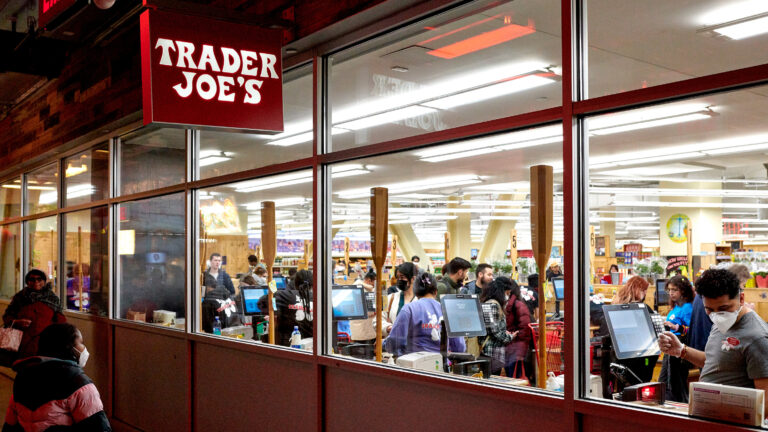
Daily News & Commentary
Start your day with our roundup of the latest labor developments. See all
November 23
Workers at the Southeastern Pennsylvania Transportation Authority vote to authorize a strike; Washington State legislators consider a bill empowering public employees to bargain over workplace AI implementation; and University of California workers engage in a two-day strike.
November 21
The “Big Three” record labels make a deal with an AI music streaming startup; 30 stores join the now week-old Starbucks Workers United strike; and the Mine Safety and Health Administration draws scrutiny over a recent worker death.
November 20
Law professors file brief in Slaughter; New York appeals court hears arguments about blog post firing; Senate committee delays consideration of NLRB nominee.
November 19
A federal judge blocks the Trump administration’s efforts to cancel the collective bargaining rights of workers at the U.S. Agency for Global Media; Representative Jared Golden secures 218 signatures for a bill that would repeal a Trump administration executive order stripping federal workers of their collective bargaining rights; and Dallas residents sue the City of Dallas in hopes of declaring hundreds of ordinances that ban bias against LGBTQ+ individuals void.
November 18
A federal judge pressed DOJ lawyers to define “illegal” DEI programs; Peco Foods prevails in ERISA challenge over 401(k) forfeitures; D.C. court restores collective bargaining rights for Voice of America workers; Rep. Jared Golden secures House vote on restoring federal workers' union rights.
November 17
Justices receive petition to resolve FLSA circuit split, vaccine religious discrimination plaintiffs lose ground, and NJ sues Amazon over misclassification.